
Facts About Italian Food
Part 2

1. On the first day of the new year, Italians traditionally eat lentils as they are considered to bring good fortune during the next twelve months. Lentils are called le lenticchie in Italian.
They are associated with prosperity and wealth because they look like small coins.

2. The period before Lent is called il Carnevale and throughout Italy it is a time of merry-making, parades, fancy dress and masks. Venice (Venezia) is the most famous place for Carnevale activities.
A traditional Italian food in Italy during Carnevale is le frittelle. These are pan-fried fritters and they can be prepared in a spiral shape.
Read more about Carnevale
3. On Good Friday (il Venerdì Santo) it is the Italian tradition to eat fish and NOT to eat any meat. On Easter Day (la Domenica di Pasqua) it is the Italian tradition to eat lamb - l'agnello.
There is an Easter sponge cake called la colomba, meaning 'the dove.' It is shaped like an open-winged dove and is decorated with almonds and sugar strands. The dove is a symbol of peace.

On Easter Day, chocolate eggs are also eaten. They are very beautifully wrapped with coloured foil and a bow at the top. Inside there is always a surprise gift known as una sorpresa. In this giant Easter egg the sorpresa was a plastic hair comb! Molto deludente! (Very disappointing!)
un uovo di Pasqua = an Easter egg.
More about Easter in Italy

4. At Christmas there is a special cake called il panettone. It contains dried fruit and candied peel. Another cake called il pandoro is also eaten. Its name means 'golden bread'. It does not contain dried fruit or candied peel but it can be plain or filled with custard cream - la crema pasticcera.
Il pandoro is traditionally dusted with icing sugar - lo zucchero a velo.


Above: il panettone and il pandoro
Late on Christmas Eve it is the tradition to eat a dinner called il cenone della Vigilia di Natale. Another late night dinner is eaten at New Year - this can be called either il cenone di San Silvestro or il cenone di Capodanno.
More about Christmas in Italy
5. At special occasions such as a wedding (un matrimonio), a christening (un battesimo), First Communion (una prima comunione) and Confirmation (una cresima), it is the tradition to give a keepsake to the guests. This is called una bomboniera.
Usually la bomboniera consists of five sugared almonds called confetti wrapped in a decorative pouch or box and accompanied with a trinket. The five sugared almonds represent:
health (la salute), wealth (la ricchezza), happiness (la felicità), fertility (la fertilità) and long life (la longevità).



There is a little label attached (un biglietto) to la bomboniera with the details of the special occasion: names, date, etc.
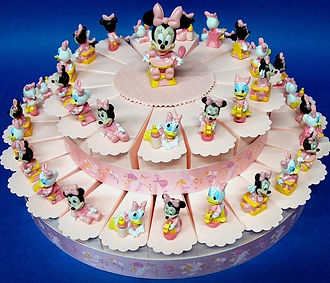
Nowadays, there are all kinds of individual designs and ideas that are used for una bomboniera. They can even be laid out in the form of a cake called una torta bomboniera.
6. La ricotta is a dairy product. Its name literally means 'recooked'. It is the creamy result of heating whey that is left over from producing cheese. The whey is heated to near-boiling point and produces a curd which is la ricotta. The whey can come from the milk of sheep, goat, cow or buffalo.
La ricotta is used in many Italian recipes. It can be eaten simply fresh with bread or in pasta dishes - la pasta alla ricotta.
It is often found mixed with spinach - gli spinaci - in the filling of ravioli. This is called i ravioli di ricotta e spinaci. In Sardinia, there are sweet pastries called le formaggelle that are filled with a ricotta mixture.
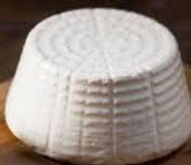

The photos are of la ricotta and
le formaggelle
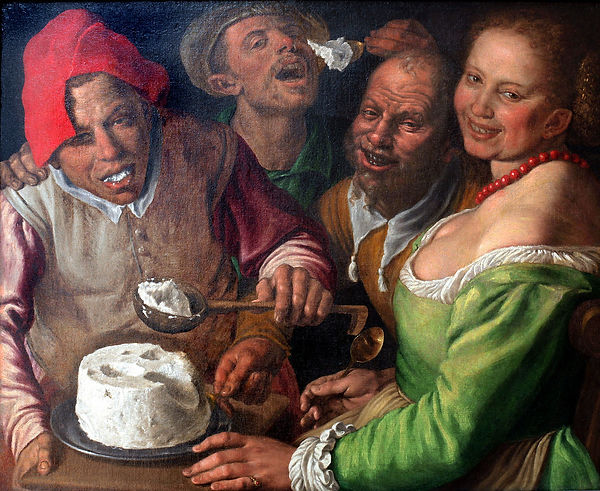
This famous painting is called
I Mangiatori di Ricotta (The Ricotta Eaters) by Italian artist Vincenzo Campi (1536 - 1591).
It can be seen at le Musée des Beaux-Arts, in Lyon, France
7. Il brodo di pollo is a popular winter meal for Italians. It is also eaten as a remedy for flu or a bad cold. It is considered a food that helps to make you feel better, like medicine.
It is a kind of chicken broth. The first step in its preparation is to fill a large saucepan with water. Into the water are placed: pieces of chicken (the meat has to include the bone), basil, pieces of tomato, garlic, large chunks of onion, celery sticks and carrots.
The ingredients are slowly simmered. (Below)

When the meat is cooked, it is taken out of the pan. The other large vegetables are also removed and placed on a serving dish with the chicken.
The remaining liquid in the pan is sieved so that the pieces of garlic and other small bits are removed, leaving a clear 'soup.' Pasta is then cooked in the liquid.
Il brodo di pollo provides two courses:
1. The soup with pasta in it.
2. The meat and vegetables.
Another version is il brodo di carne which is prepared with meat such as beef instead of chicken.
8. Il ragù is a pasta sauce originally from the area of Bologna. It is made with minced meat, finely-chopped vegetables, chopped pancetta (bacon) and tomato sauce. It is served with pasta such as le tagliatelle (long ribbons) and used in the baked pasta dish - lasagne al forno.
The full Italian name of the sauce is il ragù alla bolognese. The pasta dish known as le tagliatelle alla bolognese means that the pasta is served with il ragù.
9. Lo spezzatino is a meat stew that is popular in winter. It can be prepared with meat such as beef (il manzo) and veal (il vitello). The word spezzatino means 'a dish that is served in little pieces.' The word pezzo - meaning 'piece' - is hidden in 'spezzatino'. The meat is diced into small pieces and stewed slowly in a pan with diced potatoes and other vegetables and herbs.
Another word for 'stew' in Italian is lo stufato.
A slow-cooked pot roast prepared with larger pieces of beef or veal is called il brasato.
10. Gli antipasti are appetisers served before the first course of a meal.
The purpose of un antipasto is to develop your appetite before your meal and also to enjoy having a chat -fare una chiacchierata - with friends and family around the table whilst you wait!
The word 'antipasto' literally means 'before meal.'
anti - before pasto - meal
Typical antipasti to lay on an Italian table are: le olive - olives, il formaggio - cheese, il salame - salami-type sausage, le verdure - vegetables and bread - il pane.

11. Different regions of Italy are famous for different types of cured meats and cheeses.
The best quality hams come from the Emilia-Romagna region. The most well-known type of ham is called il prosciutto crudo - meaning 'raw ham'. The most highly valued prosciutto is called il prosciutto di Parma.
The 'raw ham' is made with the rear legs of the pig - il maiale - and it is cured only with sea salt. Its preparation takes a very long time ranging from 400 days to 3 years!
This type of ham is always cut into very thin slices.

12. Parmesan cheese is produced in the regions of Emilia-Romagna and Lombardia. The most well-known type of Parmesan cheese is il Parmigiano Reggiano. It is made from cow's milk and takes at least one year to mature. The stravecchio (aged) variety is the most prestigious and can take 3 years to mature.
The cheese is produced in the form of a wheel. It can be served in slices as un antipasto or grated to sprinkle over pasta dishes.

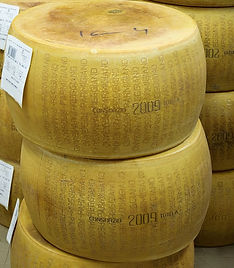
13. In Sardegna - Sardinia, wild boar is very common. It is called il cinghiale and it is used to make both fresh and dry cured sausages. Traditionally, a hunt - una caccia - is arranged in the summer months to keep the boar population under control.
14. La mortadella Bologna originated in Bologna, the capital city of the Emilia-Romagna region. It is made from pork and is extremely popular both in Italy and around the world. It is easily recognised by the presence of white pieces of fat. You might also see some little pieces of pistachio or peppercorn.
La mortadella is served very thinly-sliced. In Italy, hams and sausages that are served sliced belong to a food category called gli affettati.

15. Il riso Arborio is the most well-known Italian rice used in risotto dishes. It takes its name from the town of Arborio in the Piemonte region.
Another type of Italian rice is il riso Carnaroli, from the provinces of Pavia, Novara and Vercelli in northern Italy.
The cultivation of Italian rice is called la risicoltura. Just as with pasta dishes, Italians tend to prefer their rice to be cooked al dente - meaning that it has some firmness when it is bitten rather than soft.
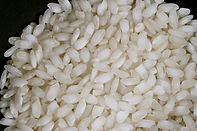
Image: il riso Arborio